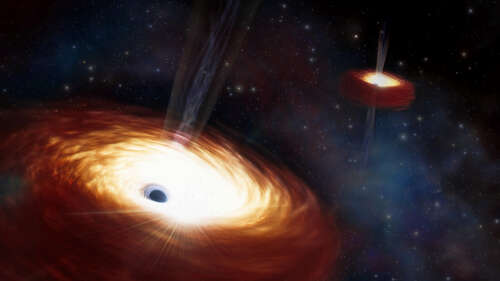
The mass of the pair of supermassive black holes located in the elliptical galaxy B2 0402+379 is calculated to be a whopping 28 billion times the mass of the sun. With this enormous mass, the two black holes are also shockingly close together, with just 24 light-years between them.
With so much mass and so little space, the two would be expected to merge and create one even larger black hole, but that doesn’t seem to have happened yet. Scientists estimate that the two have held at this close distance for over three billion years.
It may be that the large mass of the black holes is what is preventing them from merging. It seems that the black holes got so big because they are themselves the results of previous galaxy mergers. Each one could be the result of multiple different smaller black holes being pulled together, allowing the black holes to grow over time.
But when supermassive black holes merge, they don’t crash straight into each other. Instead, they generally skim past each other before slingshotting back around, moving past each other in a series of close calls. As they do this dance, they gradually lose energy until they settle into a stable orbit around each other.

